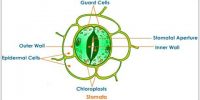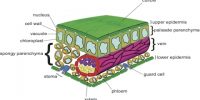Other than the ovary all other whorls of the flower dry up after fertilization. The fertilization stimulates the ovary to grow gradually increasing in size following different changes and ultimately it turns into a fruit. In some cases calyx and thalamus help in the formation of fruits such as Brinjal, apple etc.
Before fertilization: 1) Ovary 2) Ovary wall 3) Ovule
After fertilization: 1 ) Fruit 2) Fruit wall 3) Seed
Formation of seed from ovule after fertilization:
- After fertilization, the juicy ovule gradually loses water and eventually, the soft ovule turns into a hard seed.
- The outer coat of an ovule is modified to form the hard seed coat.
- The embryo is formed from the zygote through repeatedly mitosis division and gradually it changes.
- The embryo consists of cotyledons, plumules and radicals. Consequently, an endosperm may be formed. During the development of an embryo, the nucleus gives nutrition to it.
- In some cases, the endosperm doesn’t form in the seed

Sometimes outgrowths are found to grow from the funicle or micropyle of some seeds which cover the seed completely or partially. This outgrowth is called aril, such as Lichi. When this outgrowth covers the seed partially, it is called caruncle, such as – Castor seed.
Before fertilization:
(i) Ovule, (ii) Ovule Wall, (iii) Fertilized ovum (2n), (iv) Endosperm nucleus, (v) Micropyle etc.
After fertilization:
(i) Seed, (ii) Seed wall, (iii) Embroyo, (iv) Endosperm, (v) Micropyle etc.
















